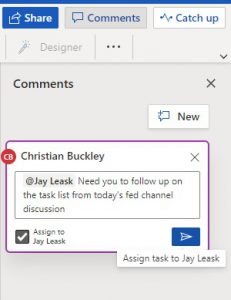Understanding the Microsoft 365 Task Ecosystem
One of my long-time complaints about Microsoft’s product priorities has been the lack of attention to task management — that is, until the last couple years as the company has slowly-but-surely invested in the Microsoft 365 task ecosystem. As some of you know, I spent the first half of my career in technical project management and business analyst roles, and found my way into collaboration technology through project and portfolio management technology. And for most of my career, no company as ever “owned” project or task management.
Well, that’s not true, exactly. The number one tool used for project management has long been microsoft Excel. Sad, but true. With the onset of SaaS platforms and tools, we began to see a number of Kanban and list-based tracking tools with some degree of integration…..yet Microsoft was not at the forefront. Yes, there was Microsoft Project, which was a staple for the hard-core PMs out there, and Project Server (ugh) and other portfolio-minded solutions for the organizational rollup and reporting across these projects. Yet there had always been a HUGE gap between the simple task-driven tools for end users and these industrial-strength platforms for the PMBOK zealots (no offense, but it can be a bit of a religious cult).
Finally someone over in Redmond came to their senses and patched together a plan for the Microsoft 365 task ecosystem. Around the same time that the company started consolidating the “Share” experience across the Microsoft 365 stack (it used to be that selecting Share on Word had different options and experiences than clicking Share on OneDrive or SharePoint or even PowerPoint), we started to see intentional moves to streamline tasks. My guess is that both Sharing and Tasks charters were reorganized in the same meeting.
Unified Services
If you think about it, people want a unified experience in how they create content, how they share content, how they create and assign tasks associated with that content, and how they view and manage both content and tasks. The task management experience should be as ubiquitous as the content creation process.
- The volume of content being created today is growing rapidly.
- We expect to create content at every end point.
- We also expect to save to, open from, and create within any storage location to which our permissions give us access.
- Sharing and tasks should be common services across all of our applications and environments.
- Management of our content and tasks should be transparent, and centralized.
 There have been a number of advances along these lines over the past two years, with Microsoft To Do and Planner at the forefront of the task ecosystem…but there is still a lot of work to be accomplished. For example, the task tools in Outlook for the Web are now Microsoft To Do, but you do not have the ability to select the lists in To Do to assign those tasks. They default to Flagged Email or have to be added manually to My Day.
There have been a number of advances along these lines over the past two years, with Microsoft To Do and Planner at the forefront of the task ecosystem…but there is still a lot of work to be accomplished. For example, the task tools in Outlook for the Web are now Microsoft To Do, but you do not have the ability to select the lists in To Do to assign those tasks. They default to Flagged Email or have to be added manually to My Day.
High on my task wish list is to see full-fidelity task integration with OneNote, allowing users to @mention people within cloud/shared notes and assign tasks, or highlight one or more lines of text and create and assign a task that lands in Planner and the recipient’s To Do list. I love the new @mention capability within the comments section in Word, Excel, and PowerPoint for the Web that sends out an email reminder, but is independent of / disconnected from Planner and To Do.
If someone assigns me a task within a cloud-connected tool or environment — whether that be Planner or OneNote or Outlook or whatever, I want to see it within To Do.
Looking at the Task Connections
Over the next few weeks, I am going to expand on the topic of tasks and explore in-depth each of the “hero” apps, task hubs, and first-party tools and environments where tasks are (or should be) created and/or managed.
I’ll be reviewing:
- To Do
- Planner
- Project (both desktop and online)
- Azure DevOps
- Outlook
- Teams
- Office Apps (Word, Excel, PowerPoint)
- OneNote
- SharePoint
- Yammer
- …and more (Whiteboard, Cortana, PowerApps, Microsoft Graph, mobile and browser experiences, etc.)
I plan to discuss what is available today, what is on the known roadmap, and where I’d like to see each tool go in the future. I’d love to get some feedback, too. If you have questions, or if I miss some detail, please let me know and I will modify my text and mention your input.




